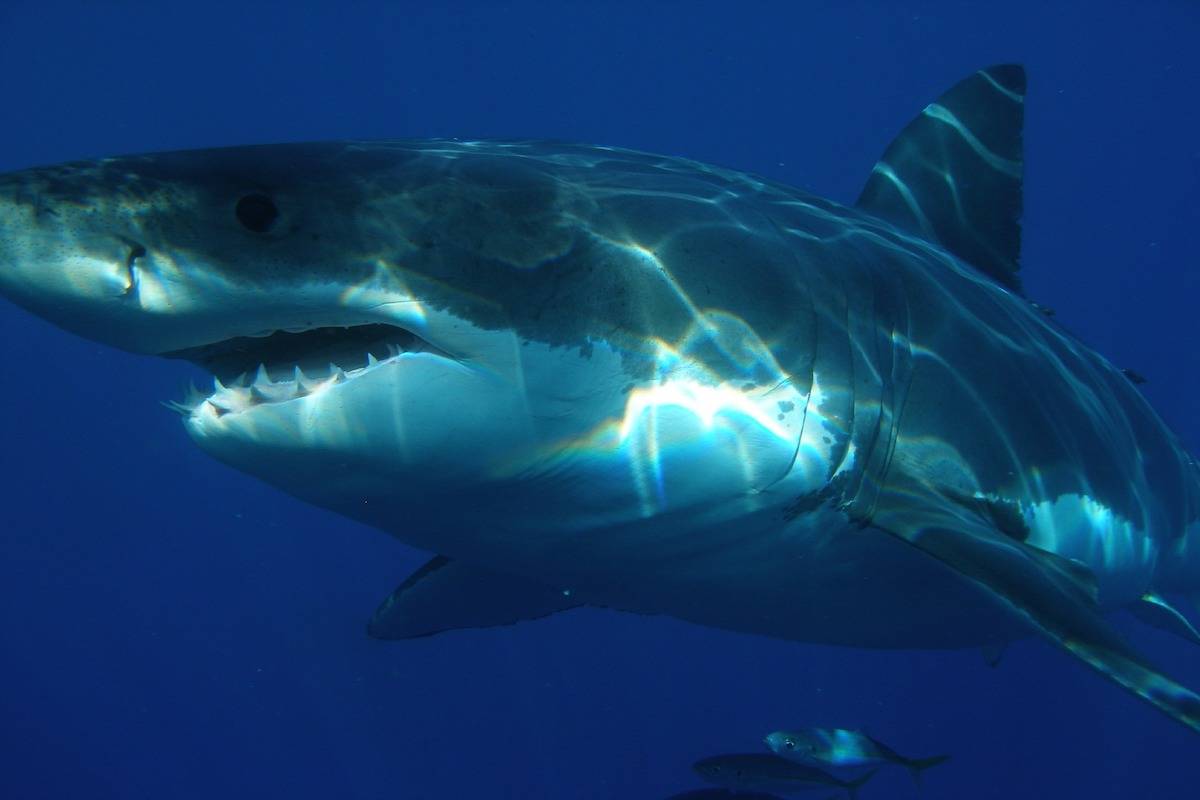A New Brunswick couple says they got away unscathed after they were followed by a great white shark while canoeing during an otherwise-tranquil June day.
Pat Barker and her husband, both avid canoers, were paddling through Passamaquoddy Bay toward Deer Island a couple of weeks ago.
At one point, they noticed that a dorsal fin had pulled up alongside their 24-foot-long canoe.
Barker said they thought it was a porpoise at first, but due to the creature’s colour and size — dark grey with a white underside and around 4.5 metres long — they quickly surmised it was probably a great white shark.
“I looked down, and I think, in my mind, I still wanted to see that porpoise shape,” she said.
“The girth around this thing was gobsmackingly huge. I can’t even describe it … it felt like I was coming up to a submarine.”
The predator turned towards the boat, dipped underwater, and circled around the back of the boat, she said.
RELATED: Ex-Canuck Willie Mitchell spots rare salmon shark off Tofino
As the couple hurried back to shore, she said, the shark followed them for some time, pushing a mound of water in front of it — Barker couldn’t say how long they were pursued, as she didn’t want to look back.
“It was terrifying,” she said. “I thought I was going to die. I thought that was it.”
After the couple reached the shore, Barker said they consulted a local shark expert in the area, who supported their theory that it was a great white shark based on their descriptions.
Chris Fischer, founding chairman of leading shark research group Ocearch, said the East Coast is emerging as a popular spot for great whites during their mating season.
Ocearch has publically-accessible live global shark tracker on their website, and according to the tracker there are currently a few sharks in Atlantic Canadian waters.
George, a mature male great white shark, is hanging around the Grand Banks of Newfoundland, while Betsy, a young female, is located just off the coast of Canso, N.S.
Further offshore, a handful of blue sharks, mako sharks, and tiger sharks can be seen on the tracker.
Hilton, a 600 kilogram great white shark who won over the hearts of Nova Scotians last year during his extended trip to Atlantic Canada, is currently off the coast of North Carolina — but Fischer said he’s headed towards Atlantic Canada.
“We have been seeing regular activity of our white sharks up there, moving up there this time of year, staying through ‘til late fall,” he said. “We believe that this has been happening since the beginning of time.”
RELATED: Elusive Greenland sharks caught on camera in Nunavut
Fischer said Atlantic Canadians should expect to see more sharks in August, and that the ones already there are early arrivals.
Though the idea of sharks may strike fear into the hearts of anyone who’s seen “Jaws,” Fischer said that having a lot of sharks around is actually a good thing.
“Lots of sharks means lots of fish sandwiches, lots of clams, lots of oysters, lots of lobsters,” he said, explaining that they’re the balance-keeper at the top of the food chain.
He said they feed on the animals below them in the food chain, keeping those populations under control and maintaining a healthy balance in the ecosystem.
They also keep seals on beaches, preventing them from decimating fish populations.
“The mere presence of the apex predator, the large sharks, modifies their behaviour so they can’t just wipe out the resource,” he said.
He added that shark attacks are exceedingly rare.
“Thousands of people die every year from drowning,” he said. ”Single digits have had fatal interactions with sharks.”
According to National Geographic, only about five people die from shark attacks each year — though the numbers are of little comfort to Barker.
“Sharks don’t know statistics,” she said.
Meanwhile, she said she won’t be heading back toward Deer Island any time soon.
The Canadian Press



